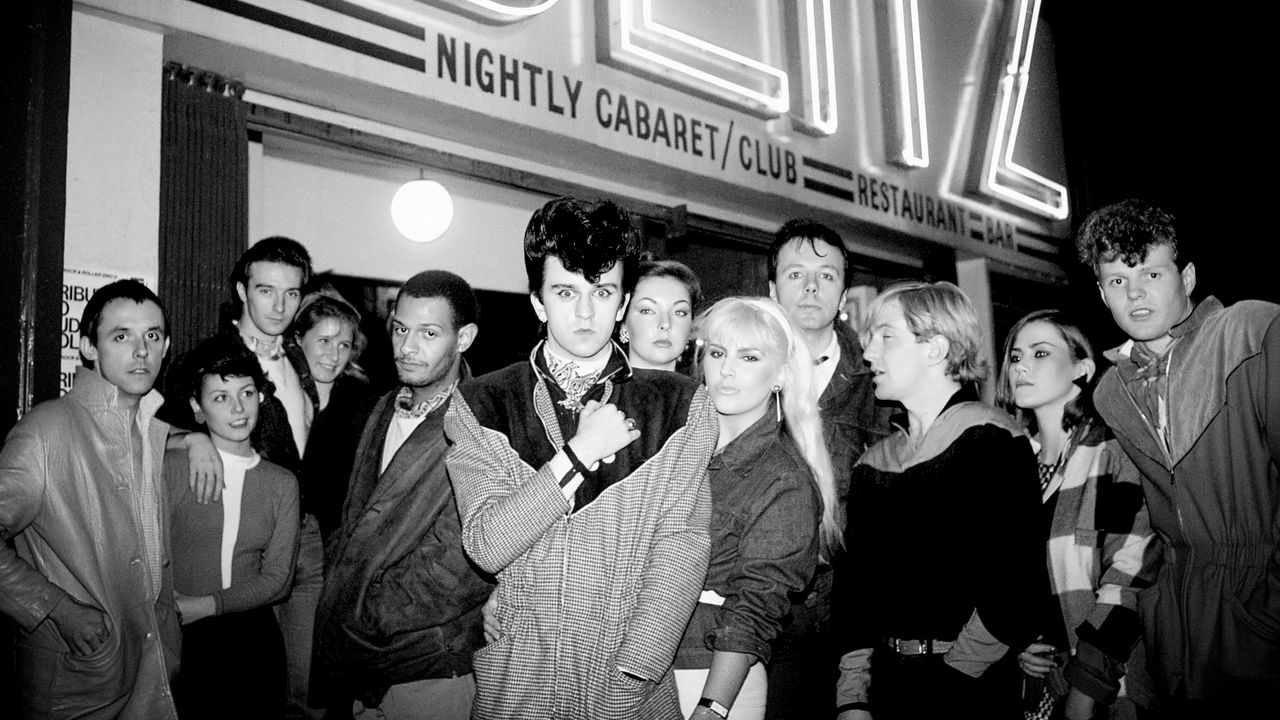Blitz Was The London Club Night Which Defined The Eighties. Stephen Jones Tours A New Exhibition Which Celebrates Its Influence.

Blitz, for the uninitiated, was the legendary clubland Narnia that sprung up in 1979, started by Steve Strange of the group Visage. (Their fantastic hit song, “Fade to Grey,” is essentially Blitz in aural form; Visage member Rusty Egan was Blitz’s DJ; and, Jones is on the record cover, in silhouette, faking playing a trombone). Strange, Egan, and Jones, along with everyone from Boy George to director John Maybury, artist Cerith Wyn Evans to editor Iain R. Webb, DJ Princess Julia to Spandau Ballet (essentially Blitz’s in-house band), collectively known as the Blitz Kids, drank and danced, posed and preened for eighteen months before the cycle of fashion turned up the lights and told them it was time to go party somewhere else. (Some of them instead basked in their newfound fame as their careers took off into the stratosphere.) The club night’s name came from the 1940s-wartime-themed bar of the same name—Blitz being the shortened blitzkrieg, the German air raid campaign on London during the Second World War—and it was held every Tuesday night at 4 Great Queen Street in Covent Garden. “No one wanted to go out on a Tuesday,” recalls Jones, “so Steve got the place for cheap.”
It’s hard to imagine, but Blitz (the bar), with its Dig for Victory World War II posters, kitschy red gingham table cloths, and wooden bar sticky from spilt beer—faithfully recreated for the exhibition—wasn’t the most obvious place for a fashion revolution to happen, yet this sartorial Winter Palace, reimagined as Blitz (the club night) changed everything. If punk was a gob in the face, then New Romanticism was putting on a tiara and forgetting you were penniless. Its favored look—theatrical, historical, bending your gender to whatever you wanted it to be, with the absolute emphasis on individualism—still resonates today.
Jones and I are standing at the entrance to the exhibition as scene-setting news footage plays, depicting what Britain was like at the tail end of the 1970s, the era that birthed Blitz, and even though I was a kid at the time, I can tell you: It was grim. There were strikes, power outages, shortages and, just to make things worse (in my opinion), the election of Margaret Thatcher as Prime Minister in 1979. “The political climate, the lack of money; that there was actually funding for art schools—all of that made Blitz happen,” remembers Jones, “and, of course, Steve. No one had had the idea of doing a club night before and inviting all of their friends.” So Blitz was like a house party? “Yes, except we couldn’t do it at Steve’s flat on the King’s Road,” Jones replies, “as it was too small, though he tried, believe me. Back then, there were ‘gentlemen’s’ clubs, some discos, a few gay clubs (but not many), and that was it,” he continued. “People didn’t really go out. And the licensing laws… when we were punks, there was only one club which would allow us in—Louise’s—and because of its restrictions, you couldn’t drink after 11pm unless you ordered food, so we’d get these cheese sandwiches. They were disgusting—but on the other hand, that’s all we might be able to afford to eat that day.”
